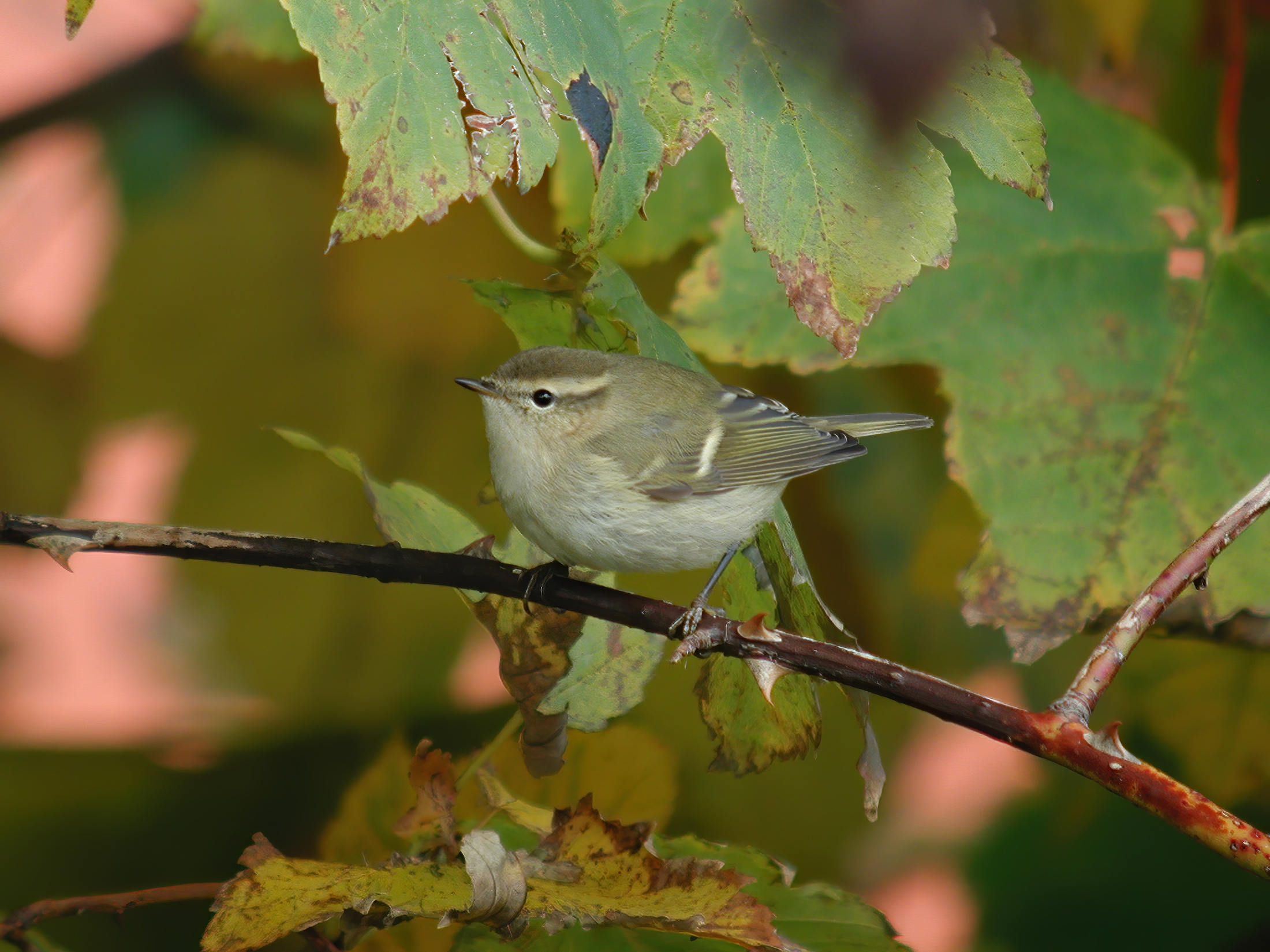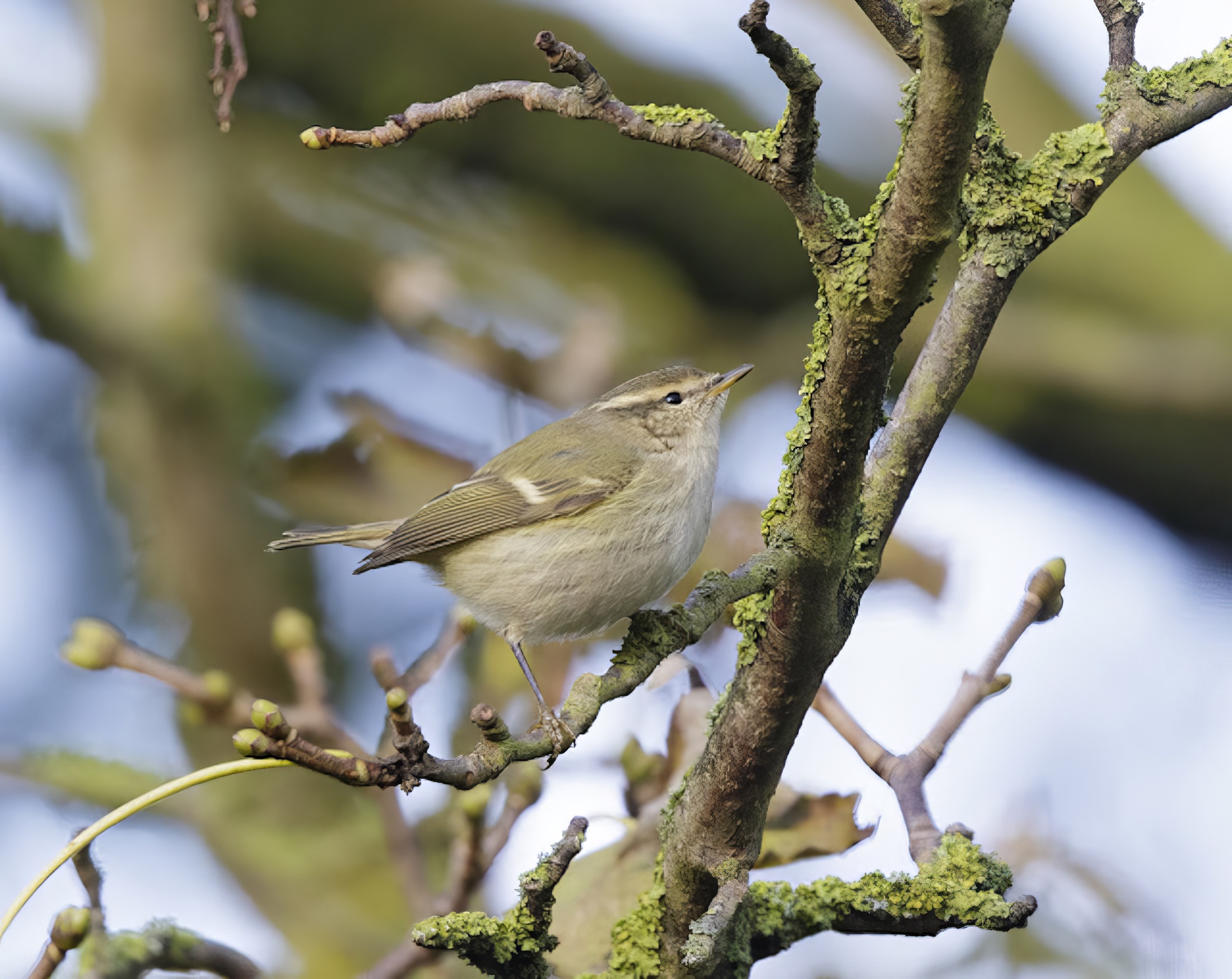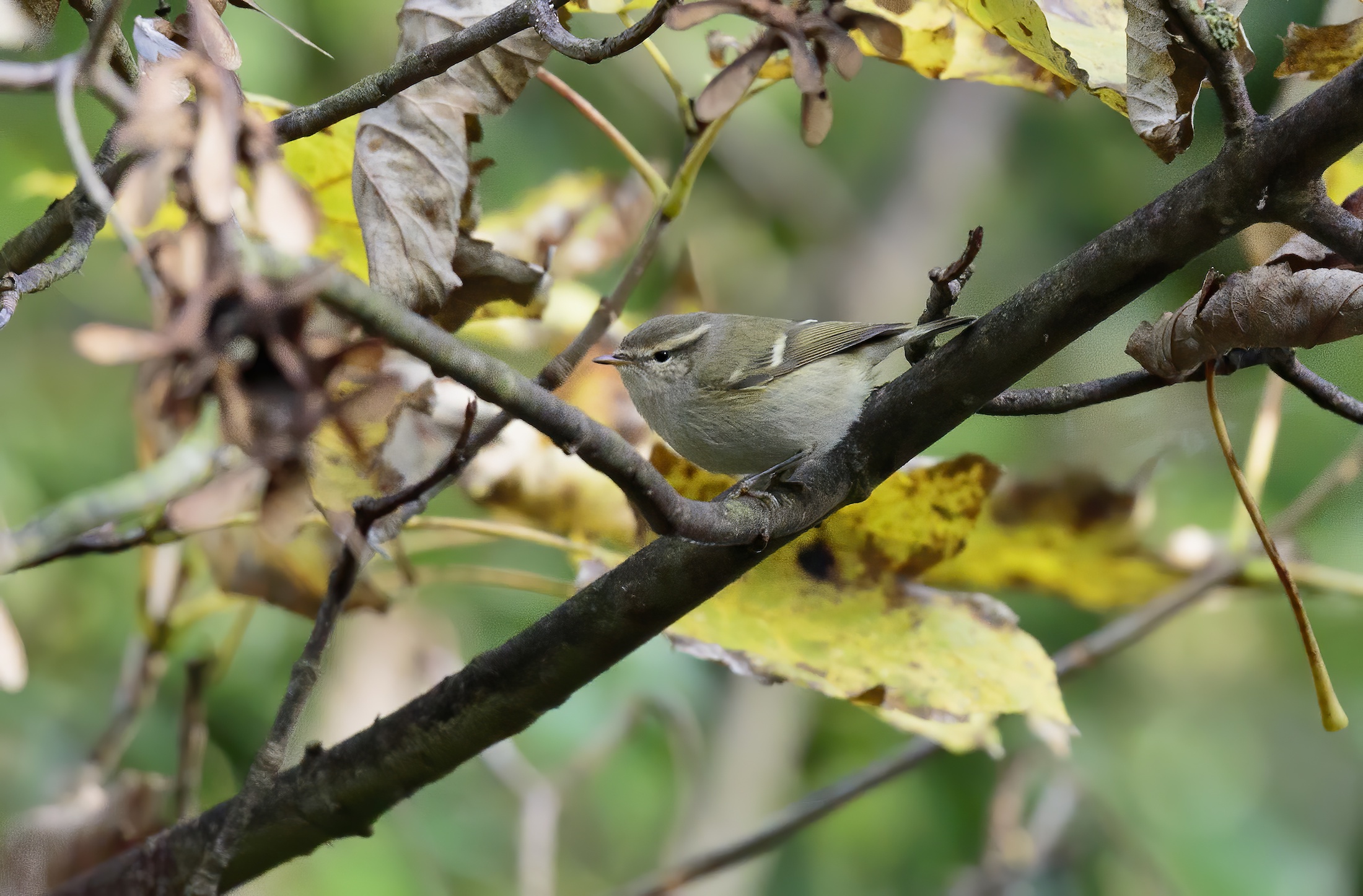Hume's Leaf Warbler Phylloscopus humei
Vagrant. Central Asia, winters mainly Indian Subcontinent.



Hume's Leaf Warbler: Left, Anderby Creek, Oct 18th 2003 (Graham Catley); centre and right, Gibraltar Point on December 4th 2013 (centre, unknown photographer; right Graham Catley).
Graham noted during two hours of watching the Gibraltar Point bird that there was a huge variation in appearance due to changing light, reflections from dark green ivy, bright green leaves, and the effects of dark and shade.
There have been just three county records, with the first two occurring in 2003. The first of these was seen by just one lucky observer in the Sycamores, Acer pseudoplatanus, at Anderby Creek on October 18th. Another was found at Gibraltar Point on October 23rd and it performed consistently in the south-east corner of Sykes Plantation, often showing very well as it flitted about the outer branches of some of the Sycamores and Hawthorns, Crataegus monogyna, and remained until October 29th. As is typical for a far eastern warbler, this species has a late arrival date in Britain with most from the middle of October into November; several overwintering individuals have also now been noted.
It was as long ago as 1955 that attention was drawn to the fact that the (then) Hume's Yellow-browed Warbler Phylloscopus inornatus humei was a serious contender for addition to the British List. It was granted full species status in 1997 and formally added to the British List in 1997 (BOURC 1997). The first accepted British record was a bird at Beachy Head, Sussex, November 13th-17th 1966, and since then the total number of records 1950-2021 stands at 182. Along with some other eastern warbler species, there was an influx in the ‘big year’ of 2003 (28) but more usually the species averages about five records per year.
| Site | First date | Last date | Count | Notes |
| Anderby Creek | 18/10/2003 | - | 1 | |
| Gibraltar Point NNR | 23/10/2003 | 29/10/2003 | 1 | |
| Gibraltar Point NNR | 27/11/2013 | 04/12/2013 | 1 |
Finder’s report: Hume’s Warbler at Anderby Creek, October 18th, 2003, first county record.
by N. Senior.
Note: this (very full) account is taken from the original BBRC submission by Nick Senior and was, by a short head, the first county record being one of two in the autumn of 2003. The BBRC noted that the 22 records in 2003 constituted the best year ever. There was also a bumper crop of Pallas’s Leaf Phylloscopus proregulus and Yellow-browed Warblers P. inornatus. It was also the year in which many birders became acquainted with Hume’s Warbler. Apart from the first records for Lincolnshire, there were also firsts for Suffolk and, perhaps surprisingly, the Shetland Islands. This is very much an east coast speciality; away from Portland, it is an extremely rare bird on the south coast, and even Scilly has only had a single record. The arrivals in autumn 2003 came in two broad waves, the first in mid to late October, and the second in mid-November. All the dates were fairly typical, although there was one in Cleveland on 15th October which was slightly earlier than the norm.
Circumstances
I had spent most of the day working the Anderby Creek area and had decided to give the area of Sycamores behind the disused tennis courts a final check before leaving. At 16.40 hr. I heard a distinctive call that I recognised and on locating a small Phylloscopus warbler resembling a Yellow-browed Warbler I quickly realised with not a little excitement that this bird was almost certainly a Hume’s Warbler.
Weatherwise, this was a fairly bright day with a fresh NE breeze, sunny but with passing clouds.
Description
General appearance – Similar to Yellow-browed Warbler in size, structure, and shape. I gained the impression that this bird was slightly less attenuated than Yellow-browed with a slightly more rounded profile, but this may be more related to the duller plumage tones and perhaps the weather conditions at the time of the observation rather than to actual structural differences.
Upperparts – plumage tones were generally dull, cold-toned and subdued lacking the warm richer olive-green and yellow tones and contrast of a typical, bright Yellow-browed. Upperparts were dull, greyish/ olive-brown with a greyish cast on the mantle. Rump was slightly paler, and the tail appeared brownish-olive. The plumage tones varied in the varying light conditions, being duller when not in direct sunlight but with an increasing warmth and olive component to the plumage tomes in the warm light of afternoon sunshine, but always remaining much duller and greyer than a typical bright Yellow-browed. Crown was more olive with the suggestion of a faint crown stripe; forehead appeared slightly darker than the rest of the crown. Supercilium was dull cream running from a greyish, smudgy area on the lores, above the eye (contrasting strongly with the dark eye) and behind the eye and was of a consistently fairly narrow width and narrowing towards the edge of the nape with no flaring. There was a fairly indistinct narrow dark eyestripe behind the eye but not in front of the eye. Face appeared relatively plain with the ear coverts only and cheek being dirty creamy-white and lacking the strong mottling which tends to be a feature of most Yellow-browed’s. Eyes appeared dark in contrast to the dull plumage tones of the face.
Wing pattern – had subtle contrast between the greyish brown ground colours with a hint of olive and the dull white/cream tips and fringes so that there was a subdued contrast between the ground colour and fringes. Lesser and median coverts were dull olive/greyish with a very indistinct, short but broad, dirty greyish-white wing bar along the tips of the median coverts, which did not contrast greatly with the dull olive-grey lower scapulars. Greater coverts dull brownish-grey with a broad, long, dull off white/cream coloured wing bar along the tips which was slightly more contrasty than the median covert bar. Secondaries brownish-grey with pale creamy, dull fringes. Tertial bases were brown with dull, off-white fringes. Primaries had dark brown bases with creamy white fringes but only very indistinct small pale tips.
Underparts – generally dusky, greyish off white, with paler chin and undertail coverts. The flanks were particularly dusky and faintly streaked.
Bare parts – legs appeared quite dark grey in direct sunlight but appeared much blacker in shaded light, no pale element to the leg colour was detected at any time. Fine bill appeared similar to Yellow-browed in structure but perhaps shorter and was obviously and clearly black in colour in different light with just a very small area of the base of the lower mandible pale, fleshy coloured.
Calls – Initially called frequently but became quieter after 20 minutes or so, perhaps in preparation for roosting. Two calls were given, and both were heard clearly and frequently which enabled me to be certain of the nature of the calls in details.
The first type of call was a short, sharp, clear, thin-toned disyllabic ‘tseeo’ call with a very slight downward inflection on the ‘eo’ part of the call. A couple of times another call was interspersed, a clear rather flat ‘tseeee’ with no downward inflection somewhat reminiscent of tristis Chiffchaff. These calls lacked the strident strongly upward inflected tone and pitch of the Coal Tit-like calls of Yellow-browed Warbler.
The second type of call, given more frequently than the above call was a quite short ‘thick-toned’ disyllabic ‘tchwoeep’, this call had an almost chirping quality and was relatively level-toned lacking any strong upward inflection. Though quite loud, the call lacked the sharp, clear, high-pitched, far-carrying, piercing nature of the typical call of Yellow-browed. This call was delivered constantly in bursts of a few calls.
Reference
Wilson, K.M.(Undated). Finder's Reports: Hume's Warbler at Gibraltar Point October 23rd-29th 2003. Lincolnshire Rare & Scarce Bird Report 2003-2007.
(Account prepared November 2017; updated with reference to the new Birds of Lincolnshire (2021) October 2022)

